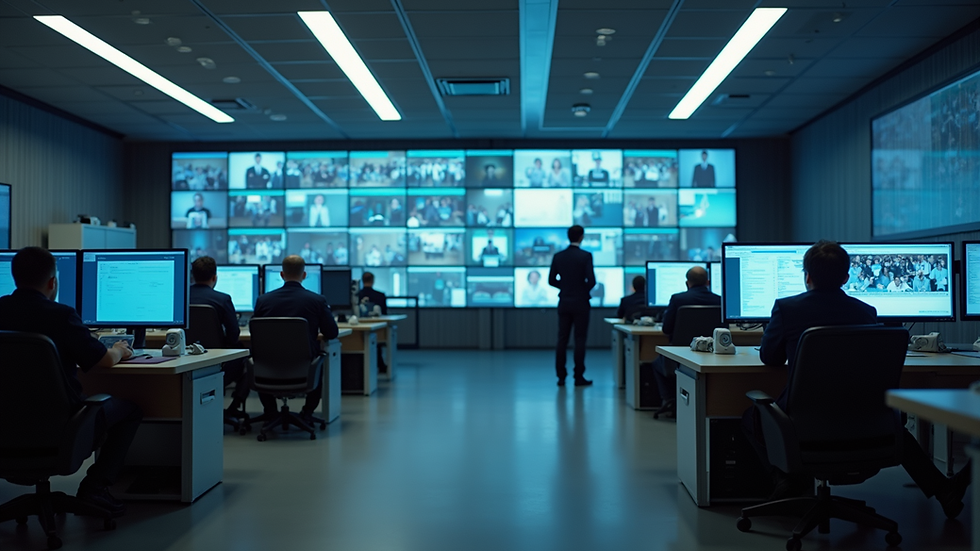Revolutionizing Election Integrity with Live Webcasting and Advanced Surveillance Technology
- Rahul N
- Jul 9
- 3 min read
In today's democratic landscape, ensuring election integrity isn't just important; it's essential. With reported cases of electoral fraud, it’s clear we need innovative solutions. One groundbreaking approach involves using live webcasting and IP-based cameras at polling stations. This technology enhances surveillance, fosters accountability, and ultimately helps ensure fair elections.
The Need for Enhanced Election Monitoring
Elections are the foundation of democracy, and any disruption can erode public trust. Statistics reveal that in recent elections, nearly 20% of voters expressed concerns over electoral fraud. Such apprehensions highlight the urgent need for improved monitoring. Live webcasting offers an effective solution, allowing real-time oversight of polling activities.
Intelligent Surveillance Solutions at Polling Booths
By implementing an Administrative Auto Monitoring System with secured video streaming, elections can be thoroughly monitored. Here are key features of this system:
High-Quality Video Stream: Thanks to innovative bandwidth aggregation and video compression technologies, voters can expect clear video feeds even in low-bandwidth situations. For example, during a recent election, these systems managed to maintain video clarity in areas with internet speeds as low as 1 Mbps.
Load-Sharing Cloud CDN Setup: This technology guarantees a 100% availability rate for video streams, ensuring every critical moment at polling stations is captured without fail.
Real-Time Monitoring: Election officials can notice unusual activities immediately, allowing them to address issues on-site effectively.

Promoting Transparency in the Electoral Process
Live webcasting serves an important purpose: maintaining transparency. Central offices can access live feeds from polling booths, allowing quick responses to any irregularities. For instance, if a flow of voters suddenly stops, officials can investigate possible causes. This immediate access enhances accountability and assures voters that their votes will be treated fairly.
Additionally, regular monitoring helps personnel act on any irregularities, fostering a culture of transparency that builds public trust. In fact, studies show that 85% of voters feel more confident when they know elections are being monitored.
Addressing Concerns Related to Election Security
The live webcasting system directly addresses several election security issues:
Identification of Malpractices: Real-time capabilities allow election staff to document suspicious behaviors, such as unauthorized individuals at polling places, ensuring swift action can be taken.
Mitigation of Errors: Every process is recorded, reducing disputes over election results. For example, footage can clarify voter counts or identify discrepancies post-election, providing clear evidence for any challenges.
Public Confidence: Knowing their votes are under constant surveillance can lead to improved voter turnout. According to recent studies, areas with visible monitoring saw a 10% rise in voter participation compared to past elections without such systems.

The Role of Technology in Election Integrity
The use of technology in elections has transformed significantly. No longer are we limited to basic monitoring tools. Here are some advanced technologies enhancing electoral integrity:
IP-Based Camera Systems: Installed at polling booths, these cameras provide high-definition video accessible from anywhere, allowing for constant oversight.
Cloud-Based Infrastructure: Beyond streaming, this technology securely archives video files, making them accessible for future audits and reviews.
Advanced Compression Techniques: Innovations ensure high-quality video transmission, even in areas with limited bandwidth. Over 90% of polling places reported uninterrupted video streams during recent elections.
Training and Support for Election Personnel
The effectiveness of this technology relies heavily on the training of election staff. It is essential to equip staff with skills to handle advanced surveillance systems. Regular training sessions can ensure they know how to operate the equipment efficiently. Moreover, having a dedicated technical support team can quickly resolve any technical issues, ensuring continuous monitoring throughout the election.
Future Directions for Election Monitoring Technology
Looking ahead, several developments could transform election monitoring:
Enhanced AI Integration: By using AI to identify patterns in voter behavior, officials could gain deeper insights into maintaining electoral integrity.
Community Engagement: Involving local communities in monitoring can strengthen transparency further, ensuring everyone is invested in upholding election standards.
Expansion of Coverage: As technology develops, even remote polling booths could have effective monitoring capabilities, guaranteeing every voter adheres to the same oversight standards.

Ensuring a Fair and Transparent Electoral Process
Maintaining election integrity is critical for democracy. Innovative solutions like live webcasting and advanced surveillance technologies set a new standard. By enabling real-time monitoring, these advancements not only ensure transparency but also build public trust in the electoral process.
As technology continues to evolve, it signifies the start of a transformative era in election monitoring. The goal remains clear: to preserve democracy by ensuring elections are fair, transparent, and accessible to all voters.

Comments